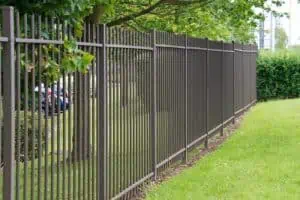What Other Woods Can Be Used For Fencing Besides Cedar?
There are a variety of woods that can be used for fencing, but not all of them are the same. The best wood for your fence depends on several factors, including your budget and the climate where you live. For example, in places that experience a lot of rain and snow, choosing lumber that can withstand moisture damage is crucial. It also needs to be resistant to rot and decay, especially in areas where termites are common.
(Looking for”black metal fencing cost“? Contact us Today!)

Cedar is a common choice for fences as it is inexpensive and long-lasting. It can last up to 25 years or more, depending on the quality of the wood and the installation process. It is also an insect-resistant material, which is helpful if you live in a place where pests are a problem.
Pine is another popular choice for fences because it is inexpensive, easy to work with, and rot-resistant. However, pine fences may need to be treated to enhance their water and rot resistance. It is not as durable as other types of wood, but it can be a good choice for those on a budget who want to save money.
Cypress is another option for fencing because it is inexpensive, rot-resistant, and has natural chemicals that repel insects. It is also not as knotty as cedar or pine, so it has a more attractive look and feel.
Redwood is a hard, dense wood that has natural properties that deter insects and resist rot and decay. It is less prone to warping and bending than softer woods, so it’s better for fences that need to stand up to harsh weather conditions.
Composite is a newer alternative to traditional wood that looks and feels like wood but has the added durability of plastic components. It is a popular option for homeowners who want a strong, low-maintenance fence that will not splinter or break under heavy stress.
Black locust is a tough wood that can withstand humidity and intense rainfall without damage. It is commonly found in the Appalachian Mountains and can cost more than other types of wood, but it will provide a long-lasting fence that is resistant to bugs and mold.
Spruce, hemlock, and pine are also popular options for fences because they are affordable, durable, and require minimal maintenance. They are often stained or painted to add color and to protect them from the elements. They can also be stained with chromate copper arsenate to prevent termite infestations.
Regardless of the type of wood you choose, it is important to follow a maintenance plan on an annual basis. These maintenance plans will help keep your fence looking fresh and beautiful for many years to come.
Pressure-treated wood is another common choice for fencing because it is rot-resistant and resists fungus growth. It is a cheaper alternative to Western red cedar and can be painted or stained to match your tastes. Its color will fade over time, though, so it is best to apply a protective stain or sealant to ensure that the color remains intact.

